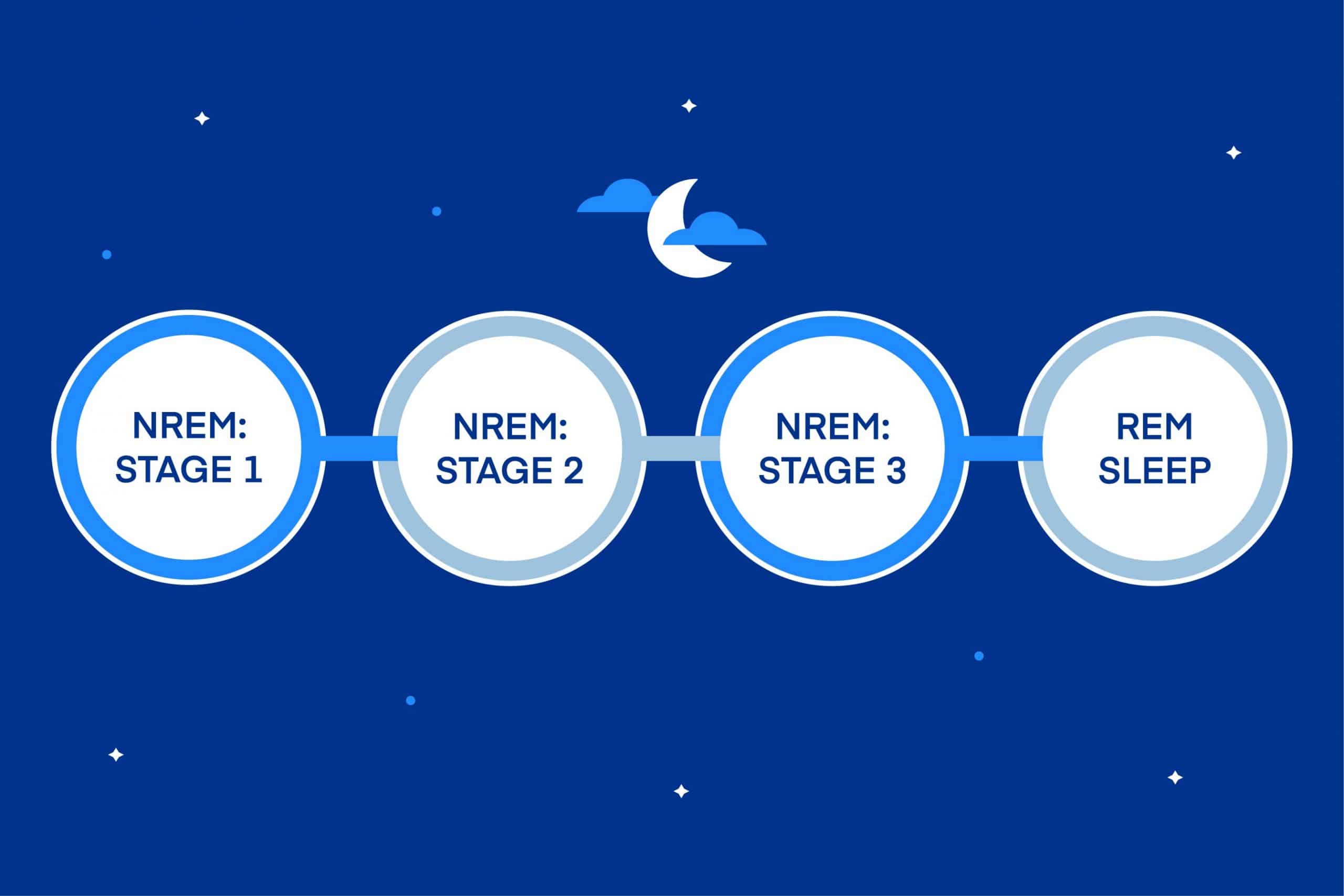You don’t always dream in every phase of sleep. Dreams tend to occur primarily during REM sleep. Read on to learn more about how dreams fit into the sleep cycle.
Although you may wake up feeling like you dreamed all night, dreaming does not take place in every sleep stage. Continue reading to discover when and how your dreams emerge.
First, a quick overview of sleep stages
Sleep is divided into two principal categories: rapid eye movement (REM) sleep and non-rapid eye movement (NREM) sleep.
NREM is further divided into three separate substages:
- N1
- N2
- N3
Throughout the night you cycle through NREM and REM multiple times. Longer, deeper REM periods typically occur closer to morning.
Here’s what happens during these sleep phases.

NREM Stage N1
Think of this stage as the “drifting off” phase.
This initial, lightest sleep stage is characterized by:
- a slowing heart rate and breathing
- slow, rolling eye movements
- muscle relaxation
You can be awakened easily and might not even realize you had briefly fallen asleep.
NREM Stage N2
Next comes “light sleep,” the stage before deep sleep sets in.
This stage features:
- a drop in body temperature
- even slower breathing and heart rate
- still eyes
You’ll spend a large portion of the night in this stage. While it’s harder to rouse someone than in N1, it’s still relatively easy to wake a person from N2.
NREM Stage N3
This is the deepest sleep stage.
Slow-wave sleep includes:
- very slow breathing and heart rate
- completely relaxed muscles
- still eyes
- critical brain and bodily processes that support health and recovery
Waking from this stage is difficult.
REM Stage
REM sleep is when dreaming commonly occurs. It usually begins about 60 to 90 minutes after falling asleep and includes two distinct subphases:
- phasic REM, during which the eyes move rapidly in short bursts
- tonic REM, which lacks those rapid eye movements
The REM phase also involves a temporary paralysis of most muscles.
Dreams primarily occur during REM sleep
During REM sleep, breathing may quicken slightly, and you may experience muscle atonia as dreams begin. This muscle paralysis helps prevent you from physically acting out your dreams.
People typically spend about an hour or more dreaming each night. You likely won’t recall every dream you have.
If you’re awakened during REM sleep, you’re more likely to remember that you were dreaming. If awoken during NREM sleep, you’re less likely to report having just been dreaming.
Can dreams happen during non-REM sleep?
Dreaming can occur in any sleep stage, but vivid, memorable dreams tend to arise in REM sleep.
In a study, 20 participants were awakened from REM and NREM stage 2 sleep across several nights. The researchers observed that NREM dream reports were generally more abstract, whereas REM dream reports were richer and more narrative-like.
Dream recall was higher following REM awakenings. Participants were also more prone to report no dream or a “white dream” after NREM sleep. A white dream is when you remember the sensation of having dreamed but not the actual content.
Can you influence or control your dreams?
Many people want to stop nightmares, have more engaging dreams, or direct events within their dreams.
It’s not always easy to escape a nightmare or a dull dream, but during REM sleep you may retain some awareness that you’re dreaming.
About 55% of people will experience this kind of lucid dreaming at least once in their life. Around 23% have lucid dreams regularly, about once a month or more. In a lucid dream, you can alter or steer the dream’s content.
Research suggests these techniques may encourage lucid dreaming:
- Wake back to bed (WBTB). As the name implies, you wake briefly after initiating sleep. For example, set an alarm for about five hours after going to bed, get up and stay awake for roughly 30 minutes doing a calm, alerting activity like reading, then return to sleep. This can increase the chance of a lucid dream.
- Mnemonic induction of lucid dreams (MILD). With MILD, you form a clear intention beforehand to remember you are dreaming. Repeating this intention to yourself aloud can help.
A note on lucid dreaming
Researchers have found that lucid dreams can coincide with sleep paralysis—short periods of temporary muscle immobility when waking or just falling asleep.
You might sense a presence in the room or experience hallucination-like phenomena that feel like dreaming while awake.
Because you can’t move during sleep paralysis, it can be frightening. The reassuring news is that these episodes typically resolve on their own within a few minutes.
Takeaway
The vivid dreams you remember in the morning most often occur during REM sleep — although dreaming can take place in other stages of the sleep cycle as well.
Lucid dreaming may allow you to shape your dream experiences. Even if you don’t recall them, you are still dreaming during sleep.


















Leave a Reply
You must be logged in to post a comment.